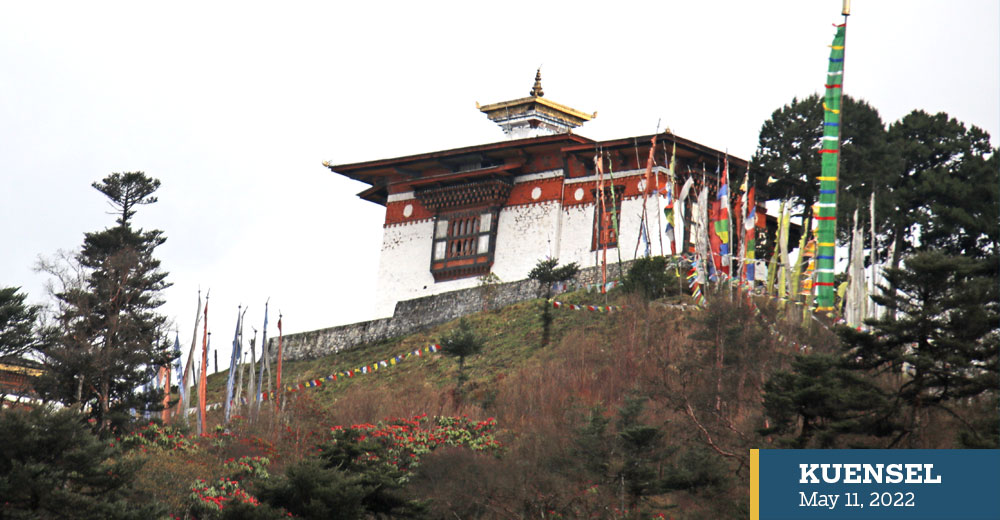Phub Dem
For many urbanites, the Lungchutse hike has become an attractive escape, especially during holidays and weekends.
Easy trails. Stunning cliffs. Unique geological features. Forests. Streams. Meadows … here you get to see all at once.
Lungchutse is an ideal place for those looking to go out and enjoy some freshness.
The trail from DochuLa climbs slowly through a forest of hemlock, birch, and rhododendron forests until reaching an open meadow.
A two-hour hike is crisscrossed with a series of well-marked trails, ranging from easy to moderate exertion. Much frequented by local travellers, the path is well-trodden.
I began the hike with my colleagues at around 10. As you climb the trail from the Wangdue-Dochula highway, you are greeted with colourful prayer flags and rhododendrons.



As we delve deeper, we are greeted with fog and grounds peppered with fleeting views of rhododendron flowers.
The dense forest with tall trees, moss-covered rhododendrons, gigantic hemlocks, junipers, and stumps covered with green mosses, lead to a perfect outing amid a hectic town schedule.
After a few miles, one lands up at the junction of another trail connecting Lungchutse Lhakhang to Tashigang Goenpa, above Hungtsho.
As you trek through the old forest, the sight of rare birds, wild mushrooms, and finally the Lhakhang (the highest point on the trail is about 3569 meters above sea level) at the hilltop provides a panoramic view of the Himalayan richness.
From Lungchutse, the monks at the lhakhang said one can see the spectacular view of Mount Jomolhari, Gang Bum, Gangchen Tag, Masagang, Tsenda Gang, Teri Gang, Table mountain, Hinglae La, Gangkar Puensum and Dagala.
Unfortunately, I missed the clear day.
Lungchutse Lhakhang, a sixteen-century monastery, got a complete makeover in 2008 after it almost disappeared in ruins as a community Lhakhang of the Toeb.
The Lhakhang was renovated by Her Majesty the Queen Mother Dorji Wangmo Wangchuck to mark the ‘inspirational leadership’ of the fourth king.
The renovation started in 2003 and the lhakhang is connected with sufficient water and electricity.
According to a monk attending the Lhakhang, the Lhakhang is called Lungjurtse, which translates to a vast hilltop that pleases everyone.
The lhakhang was built to serve as the seat of Terton Drukdra Dorji. The great Buddhist luminary who prophesied the birth and life of His Majesty the Fourth King and unprecendented growth of Bhutan as a nation under His reign.
Right below the Lhakhang, there is a cremation ground where Terton Drukdra Dorji cremated his mother.
Early spring is an ideal time to visit the Lhakhang.
Except during lockdowns and peak winter, the monk said that scores of people visit the lhakhang daily.


